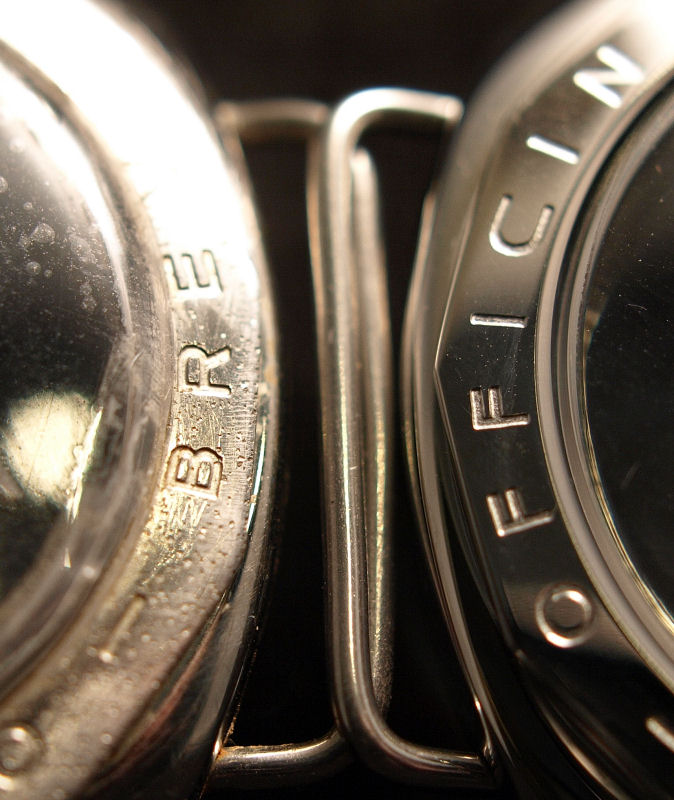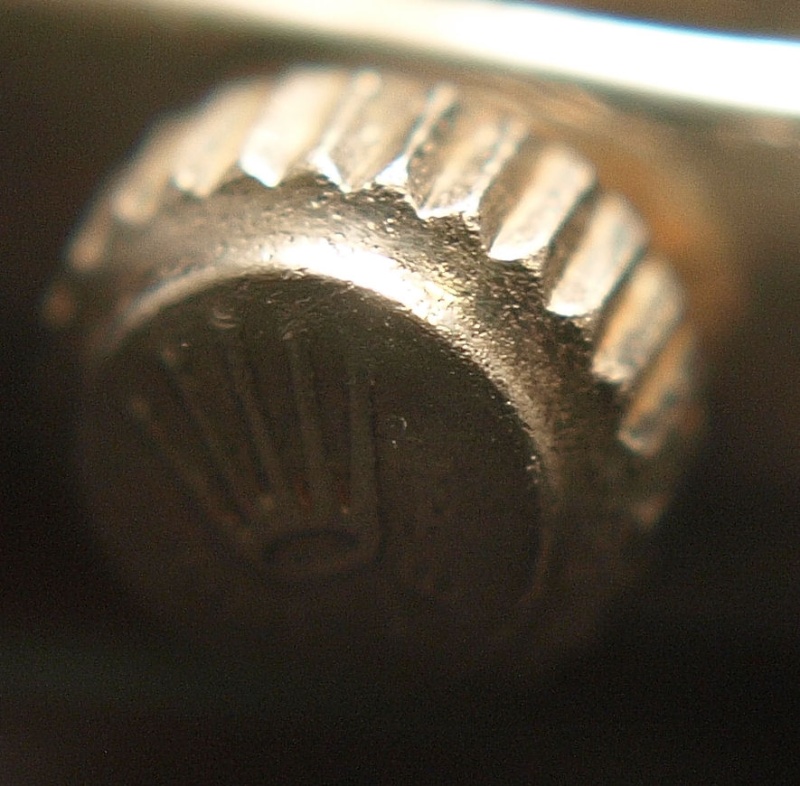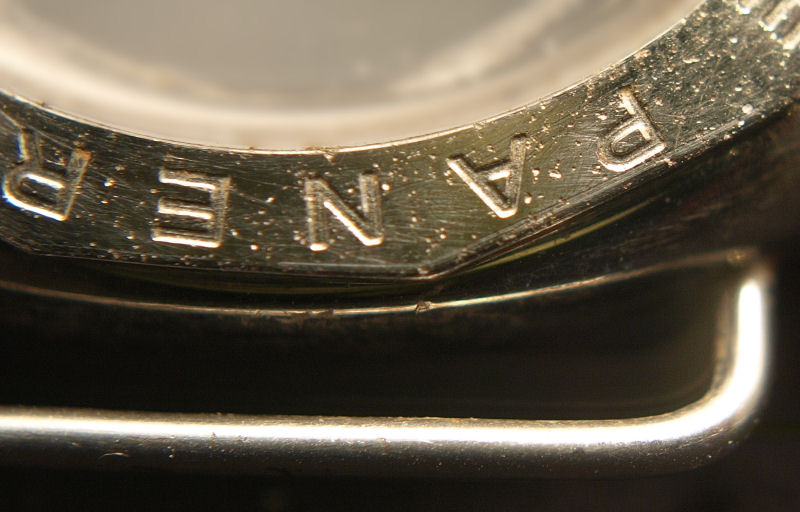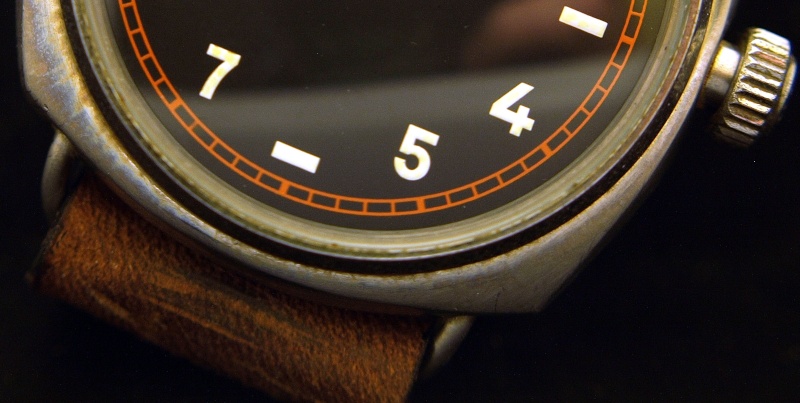I know I am guilty of the past practise as much as anyone, I now have the conviction of a convert. I never liked the traditional ways of making new watches look old. Common DIY practice is; scratching and dinging a surface which would make it appear older but the fact is you have to do this to a abnormal level for the effect to ‘look’ effective. This would then make the process fake and un-natural looking … as well, forced dings and pocks and such are much sharper than similar wear that is created and further worn in time. Sanding, toolmarks from files, are all too uniform as well as unlikely. Most watch wearers don’t subject their wrist pieces to the whims of a file, or for that matter any kind of aggressive encounter. It happens sure. But, it’s random and likely unwanted in the real world and that kind of real application is hard to pony up on purpose …
Stainless steel is really pretty tough stuff. Especially watch cases and it’s used for those very reasons. It doesn’t rust easily and it survives in salt water. Human sweat and the constant contact of wearing over decades will eventually pit and corrode a surface even such a tough one. This is a process that happens at a level that most of don’t even notice and the thing is that this kind of wear can go unnoticed except that it attains a certain look, feel and a patina of age that makes something in good nick that is 60 years old look different from something that was made last year.

The first photo shows two identical cases that are in fact from the same batch, they are the same age and one pictured at the right is used as the control. The case on the left has been aged with two simple processes. 1) The entire surface has been subjected to micro scratches. These are tiny hair-like surface scratches that can’t even be seen with the naked eye. But they occur on any polished surface that is in fact left to the elements. Under magnification, all polished surfaces show micro-scratching, and the older something is, the more it will have. Visually, this takes some of the focus out of the polish, while leaving the over-all appearance of the finish. Jewelry, watches, keys, coins, cutlery, and other commonly handled and long-life items gather this natural buffing.
This type of wear is much more reasonable and accurate than toolmarks. (Toolmarks: the uniform, repetitious gouges and scratches left by, files, sandpaper, grinders and other hand and power tools. Files, sandpaper and dremel tools are the usual suspects.) That is because these methods don’t happen in real life. They are short-cuts and they leave a trail of why and what was done. On first appearance, such approaches can make a newer item look older, but inspection will soon result in finding the object has been modified and like a Dial with text that is spelled wrong as soon as you see the flaw, it jumps out and bugs you every time you view it.
The additional wear, that I have added, (notable in the first photo as well as well these others, is corrosion. Actual decomposition of the metal’s surface area. Micro pits are the result of the breakdown of the composition of molecular structure of the metal. In real life this happens over a long period of time. Combined with surface wear, and you get, no matter how slight on Stainless Steel, a patina of age. The other aspect is staining or colouration. Stainless Steel even by definition will discolour and stain, it’s just that it’s more resistant to such over carbon steel.



What I have done is replicate this and eliminated the decades it normally takes to happen, (there is also the question of IF it happens. Every watch wears differently and to different levels.) There are many factors: steel composition and quality. usage, age, organic variables. On a watch and its composite parts, different parts of the case are affected at different rates and such events are rarely calibrated or even. Examples are that one-piece cases are more resilient than their additional pieces. Bezels, crowns, crown tubes and back cases tend to corrode more than the large dense lump of the case. This is a common behaviour of metals. Sharper edges are more susceptible than curved surfaces. Smaller parts tend to be made from lesser quality steel as well.

The last part of the example is rust on a stainless surface. It does happen. Usually confined to hard-to-clean spots on a case, where stuff joins together, the same places crud builds up and can be missed even after polishing and cleaning. This 3646 case shows good rust patina or rust scale. It’s a thin and hard crust that only under magnification jumps out as rust and buildup.
This is one of those dynamic, relative things that add to and make a project that much more satisfying.
Stainless steel is really pretty tough stuff. Especially watch cases and it’s used for those very reasons. It doesn’t rust easily and it survives in salt water. Human sweat and the constant contact of wearing over decades will eventually pit and corrode a surface even such a tough one. This is a process that happens at a level that most of don’t even notice and the thing is that this kind of wear can go unnoticed except that it attains a certain look, feel and a patina of age that makes something in good nick that is 60 years old look different from something that was made last year.

The first photo shows two identical cases that are in fact from the same batch, they are the same age and one pictured at the right is used as the control. The case on the left has been aged with two simple processes. 1) The entire surface has been subjected to micro scratches. These are tiny hair-like surface scratches that can’t even be seen with the naked eye. But they occur on any polished surface that is in fact left to the elements. Under magnification, all polished surfaces show micro-scratching, and the older something is, the more it will have. Visually, this takes some of the focus out of the polish, while leaving the over-all appearance of the finish. Jewelry, watches, keys, coins, cutlery, and other commonly handled and long-life items gather this natural buffing.
This type of wear is much more reasonable and accurate than toolmarks. (Toolmarks: the uniform, repetitious gouges and scratches left by, files, sandpaper, grinders and other hand and power tools. Files, sandpaper and dremel tools are the usual suspects.) That is because these methods don’t happen in real life. They are short-cuts and they leave a trail of why and what was done. On first appearance, such approaches can make a newer item look older, but inspection will soon result in finding the object has been modified and like a Dial with text that is spelled wrong as soon as you see the flaw, it jumps out and bugs you every time you view it.
The additional wear, that I have added, (notable in the first photo as well as well these others, is corrosion. Actual decomposition of the metal’s surface area. Micro pits are the result of the breakdown of the composition of molecular structure of the metal. In real life this happens over a long period of time. Combined with surface wear, and you get, no matter how slight on Stainless Steel, a patina of age. The other aspect is staining or colouration. Stainless Steel even by definition will discolour and stain, it’s just that it’s more resistant to such over carbon steel.



What I have done is replicate this and eliminated the decades it normally takes to happen, (there is also the question of IF it happens. Every watch wears differently and to different levels.) There are many factors: steel composition and quality. usage, age, organic variables. On a watch and its composite parts, different parts of the case are affected at different rates and such events are rarely calibrated or even. Examples are that one-piece cases are more resilient than their additional pieces. Bezels, crowns, crown tubes and back cases tend to corrode more than the large dense lump of the case. This is a common behaviour of metals. Sharper edges are more susceptible than curved surfaces. Smaller parts tend to be made from lesser quality steel as well.

The last part of the example is rust on a stainless surface. It does happen. Usually confined to hard-to-clean spots on a case, where stuff joins together, the same places crud builds up and can be missed even after polishing and cleaning. This 3646 case shows good rust patina or rust scale. It’s a thin and hard crust that only under magnification jumps out as rust and buildup.
This is one of those dynamic, relative things that add to and make a project that much more satisfying.
